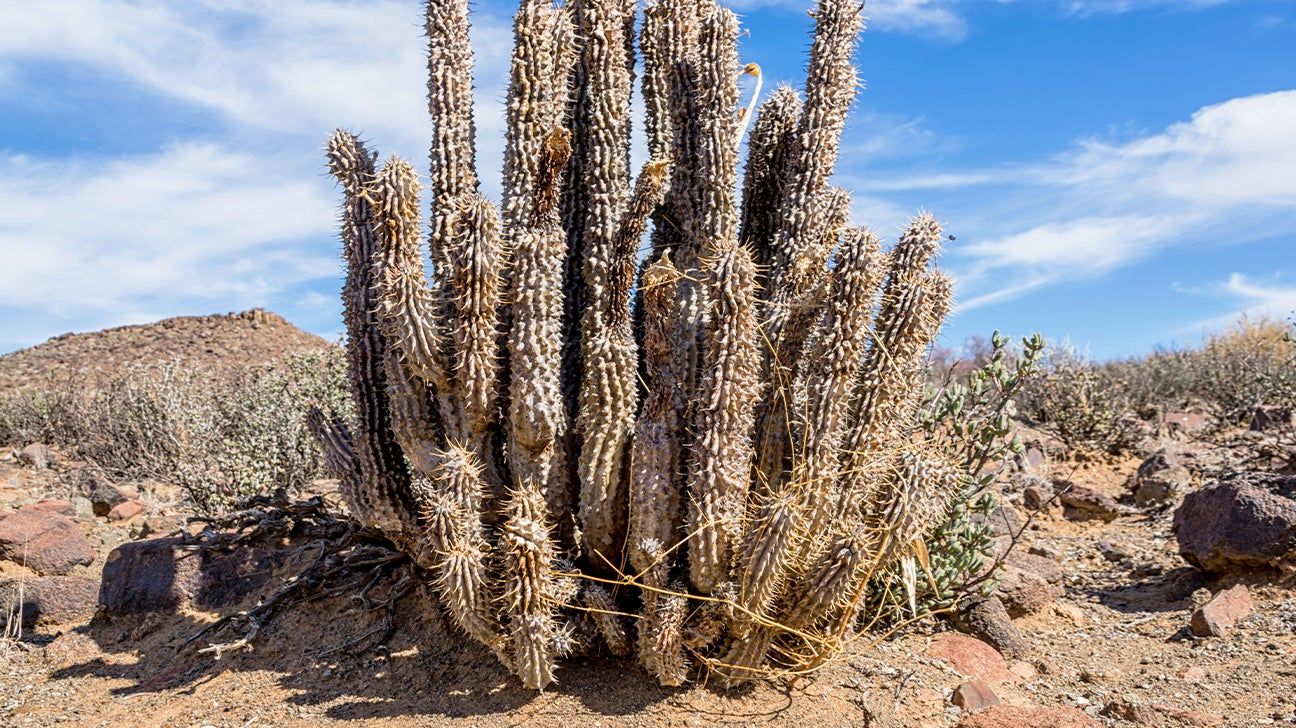
What is Hoodia? Hoodia is a succulent plant native to the deserts of Southern Africa, particularly Namibia and South Africa. Known for its appetite-suppressing properties, it has been used by the San people for centuries to stave off hunger during long hunting trips. This cactus-like plant has gained popularity in recent years as a natural weight loss aid. But there's more to Hoodia than just its diet benefits. From its unique growth patterns to its cultural significance, Hoodia is a fascinating plant with a rich history. Ready to learn more? Here are 28 intriguing facts about Hoodia that might surprise you!
What is Hoodia?
Hoodia is a succulent plant native to the deserts of Southern Africa. Known for its appetite-suppressing properties, it has been used by indigenous tribes for centuries. Let's dive into some fascinating facts about this unique plant.
-
Hoodia grows in the Kalahari Desert, one of the most arid regions on Earth.
-
The plant can survive extreme temperatures, ranging from freezing cold to scorching heat.
-
Hoodia has thick, fleshy stems that store water, helping it endure long droughts.
-
It takes about five years for Hoodia to mature and flower.
Traditional Uses of Hoodia
Indigenous tribes have relied on Hoodia for various purposes. Here are some traditional uses that highlight its importance in their culture.
-
The San people, also known as Bushmen, have used Hoodia for centuries to suppress hunger during long hunting trips.
-
Hoodia is often chewed raw by the San people to stave off thirst and hunger.
-
The plant is also used in traditional medicine to treat minor infections and indigestion.
-
Hoodia is considered a valuable resource in the harsh desert environment.
Scientific Research on Hoodia
Modern science has taken an interest in Hoodia, particularly its potential as a weight-loss aid. Here are some key findings from scientific studies.
-
Hoodia contains a molecule called P57, which is believed to suppress appetite.
-
Research suggests that P57 affects the hypothalamus, the part of the brain that controls hunger.
-
Some studies indicate that Hoodia can reduce calorie intake by up to 1,000 calories per day.
-
However, other studies have shown mixed results, and more research is needed to confirm its effectiveness.
Commercialization and Controversies
The commercialization of Hoodia has led to various controversies and challenges. Here are some notable points.
-
Hoodia gained popularity in the early 2000s as a natural weight-loss supplement.
-
The demand for Hoodia led to overharvesting, threatening the plant's survival in the wild.
-
Many Hoodia products on the market are counterfeit or contain very little of the actual plant.
-
The San people have fought for their rights to benefit from the commercial use of Hoodia, leading to legal agreements and benefit-sharing arrangements.
Conservation Efforts
Efforts are being made to protect Hoodia and ensure its sustainable use. Here are some initiatives aimed at conservation.
-
Cultivation programs have been established to grow Hoodia in controlled environments.
-
Some organizations are working to reintroduce Hoodia into its natural habitat.
-
International regulations, such as CITES, help control the trade of Hoodia to prevent overexploitation.
-
Researchers are exploring ways to synthesize P57 in the lab to reduce the pressure on wild populations.
Interesting Facts About Hoodia
Beyond its traditional uses and scientific interest, Hoodia has some intriguing characteristics. Here are a few more interesting facts.
-
Hoodia flowers emit a strong, unpleasant odor to attract pollinators like flies.
-
The plant is often mistaken for a cactus, but it belongs to the Apocynaceae family.
-
Hoodia can grow up to three feet tall, with multiple stems branching out from the base.
-
The plant's spines are actually modified leaves, which help reduce water loss.
Hoodia in Popular Culture
Hoodia has made its way into popular culture, often being featured in media and products. Here are some examples.
-
Hoodia has been featured in numerous weight-loss advertisements and infomercials.
-
It has appeared in documentaries and TV shows exploring traditional medicine and natural remedies.
-
Some celebrities have endorsed Hoodia products, boosting its popularity.
-
Despite the hype, experts caution against relying solely on Hoodia for weight loss, emphasizing the importance of a balanced diet and exercise.
The Final Scoop on Hoodia
Hoodia, a succulent plant from Africa, has intrigued many with its potential appetite-suppressing properties. Used by the San people for centuries, it’s now a popular ingredient in weight-loss supplements. However, scientific evidence supporting its effectiveness is still limited. Some studies suggest it might help reduce hunger, but others show no significant impact.
Safety is another concern. While Hoodia is generally considered safe, some users report side effects like nausea, dizziness, and increased heart rate. Always consult a healthcare professional before starting any new supplement.
In summary, Hoodia offers an interesting glimpse into traditional medicine and modern weight-loss trends. Whether it’s a miracle plant or just another fad, the conversation around Hoodia continues. Stay informed, be cautious, and make decisions that best suit your health needs.
Was this page helpful?
Our commitment to delivering trustworthy and engaging content is at the heart of what we do. Each fact on our site is contributed by real users like you, bringing a wealth of diverse insights and information. To ensure the highest standards of accuracy and reliability, our dedicated editors meticulously review each submission. This process guarantees that the facts we share are not only fascinating but also credible. Trust in our commitment to quality and authenticity as you explore and learn with us.
